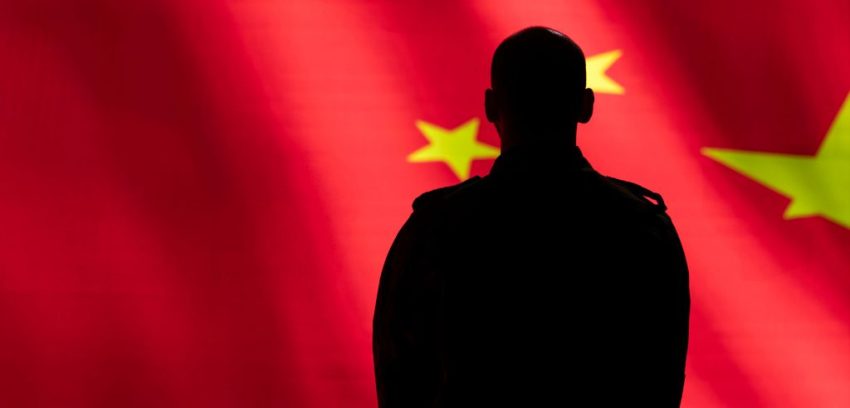Last week, world leaders whose ideological and political dispositions chime with China descended in Beijing for the country’s Victory Day military parade commemorating the 80th anniversary of the end of World War 2. It witnessed Japan’s formal surrender.
The parade showcased the latest generation of China’s artificial intelligence-directed assortment of high-tech military hardware, full of drones and missiles. What many find worrying is the integration of AI into military systems.
It was an opportunity for Chinese President Xi Jinping to demonstrate to the world, and in particular long-time antagonist, the US, how far China can go with its military technology. In attendance on 3 September were at least 20 other heads of state, including Russian President Vladimir Putin and North Korean leader Kim Jong Un.
US President Donald Trump acknowledged that he followed the parade on television. It was designed for him to catch a glimpse of the latest Chinese military hardware, comprising powerful high-tech connections, modernised with capabilities for conventional warfare engagements. The parade was China’s direct message against new post-World War 2 enemies that ironically helped it win the war against Japan. It was unsurprising that the Associated Press, in its analysis of the missiles’ capabilities, remarked that: “The DF-5C has an estimated range of about 12 400 miles, which makes it easily capable of reaching any part of the US from mainland China.”
Latest technology is fast displacing human combat in open conventional military hostilities. Large troops are still used towards enemy frontlines targeting military facilities, which result in fatalities and causalities. But now many wars are being fought from desktops. Drones are directed at enemy military installations and human positions at the click of a button. AI is fast displacing people, and the capabilities of high-tech drones displayed during the Beijing parade reveal the global ramifications of technology going forward.
Drones and AI
This has its upsides and downsides. It doesn’t bode well for world peace and order. At some point, military victory will not be achieved by how many troops you have on the ground, but by the sophistication of high-tech hardware – how far it can reach and obliterate targets. At the slightest provocation or whim, large troops are no longer massed to a border for direct military confrontations.
Drones and AI will settle disputes in seconds. Should the world fear or rejoice at this? This is about embracing new technology and understanding its implications. Given the current high levels of global diplomatic discord, tensions and resurgence of wars, the development of new AI technology presents new challenges that spell doom and gloom – more so if the hardware such as that witnessed in Beijing is abused to settle global disputes.
Read: China may embrace stablecoins in major monetary pivot
Let’s dissect what we saw and learnt from the latest Chinese high-tech military hardware. Of interest is the incorporation of AI into the function of military operations. On display were drones, AI-propelled hardware and lasers that can disable electronics. Some of the drones are AI powered. Of particular interest is the AJX002 giant submarine drone, which measures nearly 20m. The AJX002 underwater military vehicle operates without direct human involvement, demonstrating the power of machines over humans in high seas carrying out reconnaissance missions.
The drones reduce the cost of human life by displacing pilots and fighters. They also encompassed anti-drone swarm systems and “robotic dog” drones, demonstrating mankind’s unbridled ambition, which continues to shape the world for the better or worse. Some of the combat aerial vehicles are unaided by human beings, directing war-front combat. Four-legged “robotic wolves”, which are used for demining, surveillance and “hunting down enemy troops”, emerged.
China wants to displace the existing world order. One wonders how this can be achieved without creating confrontations with the US. Its technology has already sparked debate on the extent to which it can create deterrence and strike fear into the heart of the US. President Xi warned that “humanity today must choose between peace and war” and “dialogue and confrontation”.
With the resurgence of the Cold War created by the Nato-Russia standoff over Ukraine, battlelines have been recklessly drawn, creating international angst. The endless Middle East conflict, pitting Israel against its neighbours, creates deeper global tension.
The new military and economic order that Beijing seeks will further exacerbate existing suspicions, reconstructing the nuclear arms race between former presidents Ronald Reagan and Mikhail Gorbachev – this time assuming a lethal military high-tech dimension propelled by AI hardware. Xi warned that the “shadows of Cold War mentality and bullying have not dissipated”, as the world enters “a new phase of turbulence”.
With hardly any EU leaders in attendance at the parade, Putin’s emphatic presence said one thing: I have powerful friends, I am not alone.
In the meantime, the EU is rethinking its security, too, increasing its defence budgets. Snowballing tensions and dependence on technology will witness new AI-propelled high-tech military hardware carrying more sinister ramifications for world peace and order. –© 2025 NewsCentral Media
Get breaking news from TechCentral on WhatsApp. Sign up here.
- Brian Hungwe is a journalist, lawyer and legal scholar with special research interest in intellectual property law and innovation; public international law; constitutional and human rights; delict and arbitration
